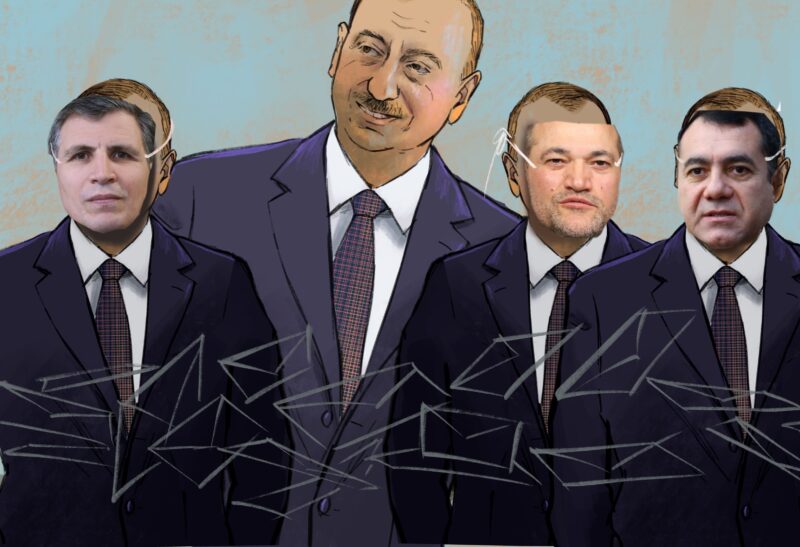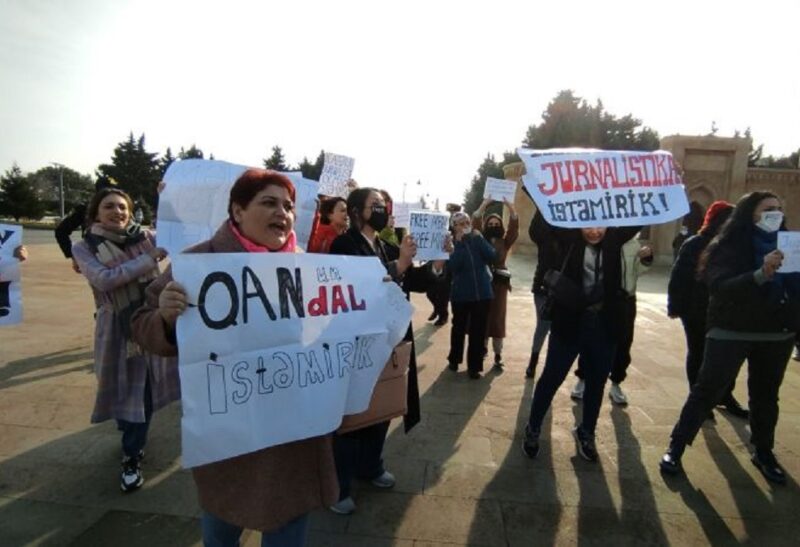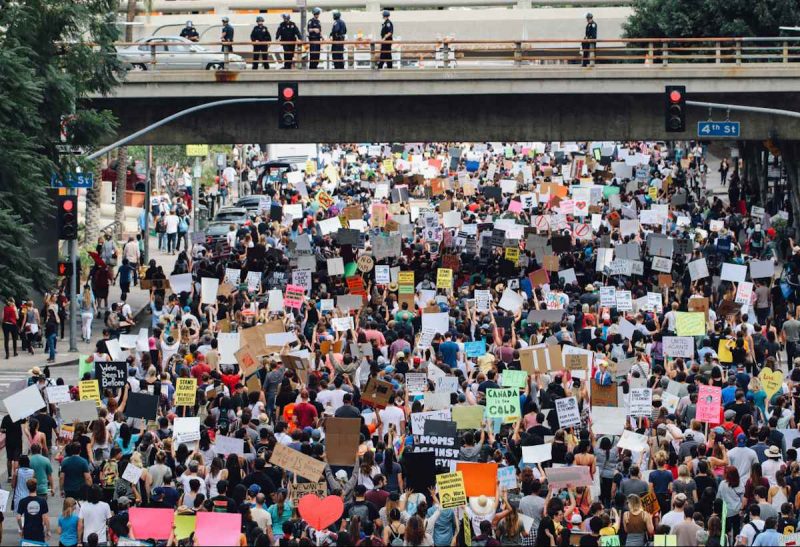Our plane touched down in Baku close to sunset: shades of pink and orange cast over the Caspian Sea engulfed the City of Flames in Azerbaijan, the country between Iran and Russia. I had finally arrived with a Unesco delegation for May’s
World Forum on Intercultural Dialogue
, a global summit meeting on bettering relations between cultures.
As the days passed, though, I found the city to be perfect. Eerily perfect.
Throughout the Baku expedition, from opulent high-rises to gala dinners, our delegation beheld that which the government wanted us to behold. And the droves of internationals set to swarm the capital around June 12 for the inaugural European Games—an Olympics-esque event that is supposed to bring some
6,000 sportsmen and women
into the city—will have the same constricted view of the capital we did.
There foreigners, whom the authorities are eager to please, are considered more precious than citizens. Such is President Ilham Aliyev’s clampdown on free expression in his own country that the Committee to Protect Journalists recently rated Azerbaijan the
fifth-most-censored country in the world
, competing with the likes of North Korea (two) and Saudi Arabia (three), a topic on which I wrote in another
recent column
. Human rights advocates and journalists alike fill the jails—but, the administration doesn’t just marginalize its opponents.
Denied access to government benefits because her husband doesn’t work for a state-funded entity, Gulnara Suleymanova and her family of five survive in a run-down shack on the oilfields right behind the newly constructed Olympic Stadium,
Meydan TV reported
.
“They build sports complexes, construct roads, but who benefits from them? Why don’t they help children? Why don’t they think that there are small children, sick and poor people living in this country? Why don’t they help them?” Suleymanova wondered.
I marveled at the stadium, a vibrant blue affair that glowed bright around five a.m., as if it were a beacon of the prosperous image President Aliyev allows visitors to see when they land at the nearby Heydar Aliyev International Airport.
[Photo credit – Jonathan Bach]
High beige walls rise along either side of the road that connects the airport to the city, and I couldn’t help but wonder if these were the same dividers about which a friend back in Oregon, where I study journalism, had told me. My friend, who frequents Azerbaijan, sat down to coffee with me before I flew halfway around the world.
The government is fashioning Baku into a “new Dubai,” she knew one afternoon in a local Spanish café. (The Dubai refrain repeated itself multiple times, next coming from a Florida man boarding for Azerbaijan inside France’s Charles de Gaulle airport.)
With that concerted urban redevelopment effort by the Aliyev administration came an equal need to hide its poverty-stricken neighborhoods. I’d later learn these roadside barriers constituted the so-called
Belt of Happiness
, behind which a much grittier and inelegant Baku breathed and slept.
At night, the capital is no doubt how the president would prefer it: Blackness falls like a hush on the poor—such as Suleymanova—and new construction gleams like gems.
Shuttled about by chauffeurs for four days, we witnessed all of Baku’s structural shining moments: the Heydar Aliyev Center, with its swooping, bleach-white walls and pristine museum to Azeri culture; the aforementioned Heydar Aliyev International Airport, another homage to incumbent President Ilham Aliyev’s dictator father; as a throwback to Azeri history, the Old Town district; and the Flame Towers, which ascend hundreds of feet into the sky and house the ritzy Fairmont Hotel.
One spring evening, gold-vested waiters whizzed around an immense ballroom within the Fairmont, serving up succulent lamb and cheese to attendees like myself. They paid meticulous attention to our every move. “More Georgian red wine?” one would gesture with a bottle, able to speak neither Russian nor English.
At one point, a gentleman—undoubtedly one of our government hosts—announced to our cohort that a fire had ravaged an apartment building in town earlier that day. With a tone of sadness, he said our entertainment for the evening would not be joyously celebratory music, but rather more somber notes from the live band.
It all seemed a bit… off.
Back home in Oregon, I find the inferno, which
killed 16 people
, including five children, was allegedly caused by flammable plastic cladding slapped on the city’s older buildings, part of the same government initiative to shroud the city in an cloak of feigned perfection.
Obviously, our host didn’t mention that.
Jonathan Bach is a research fellow with the UNESCO Crossings Institute for Conflict-Sensitive Reporting and Intercultural Dialogue. He studies journalism at the University of Oregon and writes about the post-Soviet world. He has written in Europe and Southwest Asia, as well as his adopted home town of Bend, Oregon.



